Section1 Endoscopy Equipment,
Use and Maintenance
General Principles
Some Helpful Hints
Section2 Endoscopy of the
Nasal Passages
Anatomy
Clinical Signs of Nasal Passage Disease
Endoscopic Technique
Diseases of the Nasal Passages
Rhinitis
Nasal Septum Deviation / Inflammation
Ethmoid Hematoma
Fungal Infection of the Ethmoid Labyrinth
Neoplastic Masses
Miscellaneous Diseases
Section3 Endoscopy of the
Paranasal Sinuses
Anatomy
Endoscopic Technique
Endoscopic Anatomy
Diseases of the Sinuses
Primary and Secondary Sinusitis
Neoplasia
Ethmoid Hematoma
Paranasal Sinus Cyst
Fractures and Trauma
Section4 Endoscopy of the
Guttural Pouch
Anatomy
The Medial Compartment
The Lateral Compartment
Endoscopic Technique
Entry into the Pouches (using a biopsy stylette)
Entry into the Pouches (using an artificial
insemination pipette)
Diseases of the Guttural Pouch
Tympany
Mycosis
Empyema
Temporohyoid Osteoarthropathy
Inflammation of the Guttural Pouch
Rupture of the Ventral Straight
Muscles of the Neck
Melanomatosis
Neoplasia
Cysts
Foreign Bodies
Section5 Endoscopy of the
Nasopharynx
Anatomy
Diseases of the Nasopharynx
Lymphoid Hyperplasia
Dorsal Displacement of the Soft Palate (DDSP)
Cleft Palate
Rostral Displacement of the Palatopharyngeal Arch
Collapse of the Dorsal Nasopharynx
Choanal Atresia
Nasopharyngeal Cicatrix
Nasopharyngeal Masses
Section6 Endoscopy of the
Larynx
Anatomy
Endoscopic Technique
Diseases of the Larynx
Aryepiglottic Fold Entrapment
Axial Deviation of the Aryepiglottic Folds
Epiglottic Retroversion
Epiglottitis
Subepiglottic Cysts
Arytenoid Chondritis
Left Laryngeal Hemiplegia
Right Laryngeal Hemiplegia
Biaxial Laryngeal Hemiplegia
Section7 Endoscopy of the
Trachea and Bronchi
Anatomy
Endoscopic Technique and Normal
Endoscopic Findings
Diseases of the Trachea
Tracheal Collapse
Tracheitis
Tracheal Luminal Obstruction and Masses
Miscellaneous Conditions
Gross Tracheal Discharge
Tracheal Wash and Aspirate
Bronchioalveolar Lavage
Section8 Endoscopy of the
Esophagus
Anatomy
Endoscopic Technique
Normal Endoscopic Findings
Diseases of the Esophagus
Esophageal Obstruction (Choke)
A-Primary choke
B-Secondary choke
Follow up
Treatment and Management
Esophagitis
Megaesophagus
Section9 Endoscopy of the
Stomach
Anatomy
Endoscopic Technique
Normal Endoscopic Findings
Diseases of the Stomach
Gastric Ulcers
Endoscopic Findings and Appearance of
Gastric Ulceration
Clinical Syndromes
Foals
Yearlings and Adults
Gastric Parasites
Gastric Neoplasia
Miscellaneous Gastric Conditions
Section10 Endoscopy of the
Duodenum
Anatomy
Endoscopic Technique
Normal Endoscopic Findings
Diseases of the Duodenum
Section11 Endoscopy of the Urethra,
Bladder and Ureters
Anatomy
Patient Preparation
Endoscopic Technique and
Normal Endoscopic Findings
Diseases of the Urinary System
Urolithiasis
Cystolithiasis
Sabulous Urolithiasis
Urethrolithiasis
Urinary Tract Infection
Urethritis
Cystitis
Pyelonephritis
Urethral Rent or Defect
Idiopathic Renal Hematuria
Exercise-Associated Hematuria
Urinary Tract Neoplasia
Ectopic Ureter
Urethrorectal Fistula
Section12 Endoscopy of the
Reproductive System of
the Stallion
Normal Anatomic Features
Prepuce
Penis
Urethra
Pathologic Conditions
Urethritis
Summer Sores–Habronemiasis of the Urethra
Seminal Vesiculitis
Hemospermia
Congenital Anomalies
Section13 Endoscopy of the
Reproductive System of
the Mare
Normal Anatomic Features
Endoscopic Technique
The Normal Endometrium
Endometrial Biopsy
Hysteroscopic Cannulation and Insemination
Pathologic Conditions of the Vagina
Urovagina
Vaginal Hematoma and Abscesses
Vaginal Lacerations
Varicose Veins
Vaginal Fusion
Pathologic Conditions of the Cervix
Cervical Lacerations
Cervical Adhesions
Pathologic Conditions of the Uterus
Endometritis
Endometrial, Glandular and Lymphatic Cysts
Pyometra
Persistent Endometrial Cups
Transluminal Adhesions
Tumors of the Uterus and Cervix
Foreign Bodies
Fetal Maceration or Mummification
Uterine Lacerations
Retained Fetal Membranes
Congenital Abnormalities
Pathologic Conditions of the Rectum
Rectal Stricture
Rectal Tears
Section14 Arthroscopy
Introduction
Instrumentation
Pre- & Post-Surgical Considerations
Technique Hints
Common Pathological Conditions
Specific Joints (Approaches and Pathology)
Coffin Joint
Dorsal Approach
Palmar / Plantar Approach
Pastern Joint
Dorsal Approach
Palmar / Plantar Approach
Fetlock Joint
Dorsal Approach
Palmar / Plantar Approach
Carpal Joints (Radio- & Inter-Carpal
(Middle) Joints)
Radio-Carpal Joint
Inter-Carpal Joint
Elbow Joint
Craniolateral Approach
Caudoproximal Approach
Shoulder Joint (Scapulo-Humeral Joint)
Tibio-Tarsal Joint
Stifle Joint (Femoro-Patellar and
Femoro-Tibial Joint)
Femoro-Patellar
Femoro-Tibial
(Medial and Lateral Compartments)
Lateral Approach
Dorsal Approach
Hip Joint (Coxo-Femoral Joint)
Temporomandibular Joint
Tenoscopy and Bursoscopy
Navicular Bursa
Flexor Tendon Sheath
Extensor Tendon Sheaths
Carpal and Tarsal Sheath
Carpal Sheath
Tarsal Sheath
Bicipital Bursa
Index
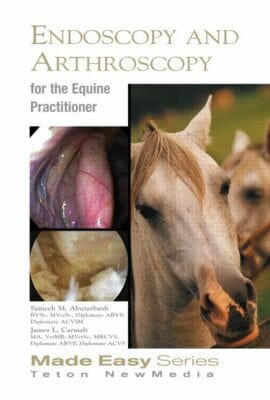

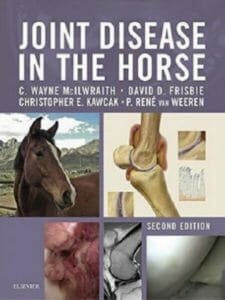


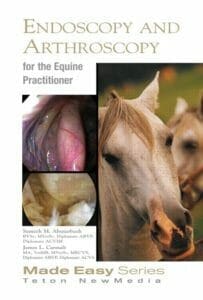
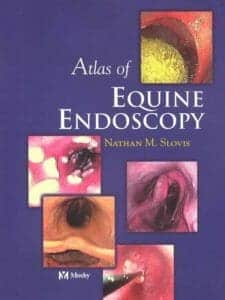


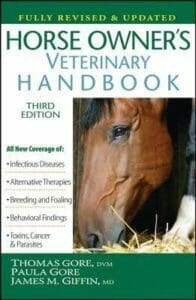




![Ettinger’s Textbook of Veterinary Internal Medicine 9th Edition [PDF+Videos] Ettinger’s Textbook of Veterinary Internal Medicine 9th Edition [True PDF+Videos]](https://www.vet-ebooks.com/wp-content/uploads/2024/10/ettingers-textbook-of-veterinary-internal-medicine-9th-edition-100x70.jpg)

![Textbook of Veterinary Diagnostic Radiology 8th Edition [PDF+Videos+Quizzes] Thrall’s Textbook of Veterinary Diagnostic Radiology, 8th edition PDF](https://www.vet-ebooks.com/wp-content/uploads/2019/09/textbook-of-veterinary-diagnostic-radiology-8th-edition-100x70.jpg)






